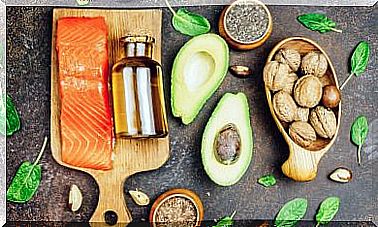The PERMA Model Or Welfare Theory
The PERMA model or theory of well-being helps us feel more satisfied in life and, therefore, with a more positive attitude. There are those who say that happiness should not be sought, but built, and therefore, each of us has the power in our hands to be happy.
What is it all about then? From this point of view, from positive psychology, we can make an interpretation of emotions and learn to enjoy the little moments. When we change our attitude towards the world, and adopt positive emotions, our well-being increases.
What is the Perma model?
The person who created this model was the American psychologist Martin Seligman, and it was he who pointed out the route to follow to maintain our positive attitude, as well as our thoughts, during the greatest moment of our life.
Assuming this model, the protagonist person can not only increase their level of well-being, but can also help others feel happy around them. Seligman said:

It is important to note that the PERMA model never intends that negative emotions are eliminated, but only to increase positive ones. Some of these positive emotions are gratitude, peace, love, curiosity, peace, inspiration, hope, among others, and all of them allow us to feel good in life.
Not surprisingly, certain studies affirm that people with a positive outlook on life tend to enjoy themselves more than the rest and feel more secure and better about themselves. For this reason, this type of theory is considered an “unforced choice”, since people freely choose those decisions that allow them to have more well-being in their lives.
What does the Perma model mean?
In 1999, Seligman would have already made an outline of what his theory would be, when he presented a proposal entitled “The 3 ways to happiness.” Now, PERMA is actually an acronym that makes reference to the five elements that allow each individual to experience well-being in their life, using the elements that are exposed in this theory.
Q: “Positive Emotions”
This refers to the increase of positive emotions to be able to better cope with certain situations. They make it easier to deal with emotions that are negative.
E: ” Engagement”.
It means “commitment”, and refers to the agreement we make with ourselves to reach a channel of flow where consciousness prevails. Our commitment will occur when we are in certain activities and we can enjoy them.
It is that moment, when we do something that we love, and time seems to stop and we only focus on what we do, in the present.

A: ” Relationships”
They are the relationships we establish with others. It refers to that network of connection that allows us to connect with humanity and not be locked in ourselves.
We are sociable beings, and therefore this point allows us to increase our well-being, since among others we also find support and protection.
M: “Meaning”
“Meaning” and “purpose”. With this, we seek to transcend ourselves, through the connections and causes that are greater for us. In order to experience well-being, it is essential that each of us find a meaning or meaning to our life.
A: “Accomplisment”
They are personal achievements, but that many times we also use to serve others. The achievement of personal goals helps us to feel more autonomy, and this is obtained by improving our skills.
If we set a goal to work on these factors, we can feel whole and well-being most of the time. However, we are not expected to become compulsory.
Ultimately, the best thing about this model of unforced choice is that we work with those elements with which we feel more in tune and that are not assumed in an imposed or compulsory way.









